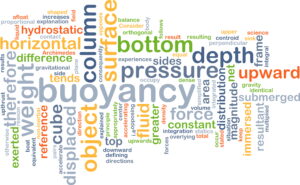 The methods behind your thermal management capabilities are essential in helping you get the most from your technological applications. Indeed, advances in technology have made it possible to streamline your industry’s capabilities in a manner that offers cost-savings and greater yields, but it would be foolish to rely on these devices as they are to function continuously for long periods of time. In today’s blog, the team at Noren Thermal Solutions in Taylor, TX discusses what you should know about the methods behind your capabilities, specifically, how passive and active cooling can help.
The methods behind your thermal management capabilities are essential in helping you get the most from your technological applications. Indeed, advances in technology have made it possible to streamline your industry’s capabilities in a manner that offers cost-savings and greater yields, but it would be foolish to rely on these devices as they are to function continuously for long periods of time. In today’s blog, the team at Noren Thermal Solutions in Taylor, TX discusses what you should know about the methods behind your capabilities, specifically, how passive and active cooling can help.
The Need for Thermal Management
Whether you are aware of it or not, there is a common misconception out there that technology and technological applications are the ultimate solutions for optimizing your capabilities. While they certainly bring a lot to the table, you must also recognize that they are not simply magic boxes that function incessantly. As a matter of fact, technology is limited depending on a number of factors.
To elaborate, all technological devices have the potential to overheat. This process occurs when internal temperatures continue to rise to dangerous operating levels, and without a solution to address these concerns, it will result in potential overheating, temporary shutdown, permanent damage, and even electrical fires. As such, it is a good idea to take a look at thermal management solutions.
Your thermal solutions and how effective they will be will depend largely on the parameters surrounding your operation. For instance, the physical environment, how much space is allotted for your devices, and even the nature of your business all plays a role. Fortunately, we have custom solutions to meet your needs. To learn more about this process and how our team can help, give us a call today.
Cooling Through Buoyancy Forces
Taking a look at passive cooling, this process primarily occurs as a result of changes in density that cause buoyancy forces to transfer waste heat. For instance, when the mass of the fluid is in contact with a hot surface, the molecules will separate and scatter. This process causes the fluid to become less dense and separate from the cooler fluid, thus resulting in a transfer of heat towards the cooler volume of that fluid. Contact our team today to learn more.
Utilizing Forced Convection
With the same goals in mind, active cooling, or forced convection, occurs when the working fluid is forced to flow over the surface of the heat source by an external force. These can range from fans to pumps, and the outcome is an artificially-induced current. While passive means may work better for some setups, active convection may prove ideal for others.
Learn More Today
Contact Noren Thermal Solutions in Taylor, TX by calling 512-595-5700 to learn more about the different ways active and passive cooling accomplish the same goal, and speak to a representative from our team to learn more about your options.



